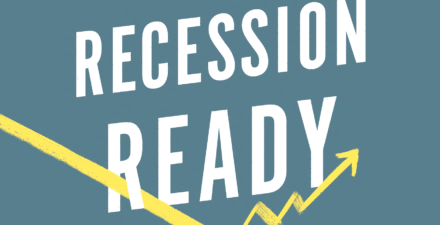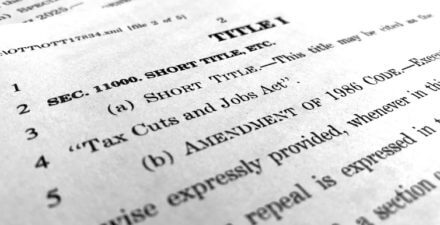Brad DeLong: Worthy reads on equitable growth, August 9–15, 2019
Worthy reads from Equitable Growth:
- There is a strange gap: A discipline such as economics, which aims at achieving the greatest good for the greatest number, ought to have long ago focused on how costly inequality is for all—or almost all—of us. Heather Boushey’s forthcoming book, Unbound: How Inequality Constricts Our Economy and What We Can Do About It, expertly fills that gap. Others agree. “In Unbound, Heather Boushey presents the strongest documentation I have seen for the many ways in which inequality is harmful to economic growth. Anyone interested in just about any aspect of economic policy, from education to antitrust to macroeconomics, will learn something from this important book.”—Jason Furman … “A rising tide used to lift all boats, but decades of rising economic inequality and wage stagnation have changed that. In Unbound, Heather Boushey provides a clear and compelling analysis of the many ways income and wealth inequality limits our economic potential, drawing important lessons from cutting-edge economic research. An invaluable addition to current economic policy debates, Unbound is a must-read for those striving for inclusive economic growth.”—Kim Clausing … “Copies of this book should be mailed to every legislator in the country. It is a powerful summary of an enormous amount of the latest and best economics research on inequality, presented clearly and explained with accessible prose.”—Suresh Naidu.
- In his column, “Extensive nonstandard work hours among U.S. low-income mothers hinder their kids’ enrollment in center-based childcare,” Cesar Perez sends us to a paper by Alejandra Ros Pilarz, Ying-Chun Lin, and Katherine A. Magnuson, “Do Parental Work Hours and Nonstandard Schedules Explain Income-Based Gaps in Center-Based Early Care and Education Participation?,” in which they write: “Low-income children ages 0—5 years are less likely to be enrolled in center-based [Early Care and Education, or ECE] programs compared with higher-income children. Low-income working parents are also more likely to work jobs with nonstandard schedules, which are associated with lower rates of center-based ECE … Mothers’ work hours and schedules are predictive of 0—5-year-old children’s enrollment in center-based ECE, and accounting for mothers’ work hours and schedules significantly reduces income-based gaps in center-based ECE, particularly among infants and toddlers.”
- Read my blog post, “The Flight to Safety in Asset Markets Has Now Become a Thing in Itself…,” in which I write: “The market has now delivered 100 basis points of easing in the 10-year Treasury window since the end of last October. On the 30-year bond, you would have made a 20 percent profit if you both [bought] last October and sold it today, compared to a 3.5 percent profit on the S&P Composite over the same period. That is a major, major sentiment shift. That means that a number of people short debt with riskier operations than the S&P Composite are about to face margin calls and rollover difficulties. We will shortly see how solvent the market judges them. No, it is not yet August 2007. But it is much closer to August 2007 than I expected to see for another generation.”
Worthy reads not from Equitable Growth:
- The answer to the question “Is Trumponomics a failure?” is “Yes.” There is no large investment boom. There is no manufacturing recovery. There is no reduced trade deficit. There is increased inequality and corruption. Read Michael Rainey, “Is Trumponomics a Failure?,” in which he writes: “Trump’s two main economic policies—tax cuts and tariffs, both intended to boost manufacturing—have flopped. The tax cuts failed to produce a surge in business investment … the tariffs … are now dragging on the economy … No one is arguing that the economy is in ruins due to Trump’s policies … But Trump and Republicans promised that their economic plans would result in lasting, structural improvements, and those don’t appear to have materialized. [Paul] Krugman says … ‘Imagine how much better shape we’d be in if the hundreds of billions squandered on tax cuts … had been used to rebuild our crumbling infrastructure.”
- The argument that the supply of savings to fund private investment was elastic with respect to the after-tax interest rate was not economically respectable back in 2017, when it was made. The solid preponderance of evidence then was that the supply of savings was inelastic. And so it has proved. Read Hunter Blair, “It’s Not Trickling Down: New Data Provides No Evidence that the TCJA Is Working as Its Proponents Claimed It Would,” in which he writes: “The strongest economically respectable argument from proponents of the Trump administration’s Tax Cuts and Jobs Act (TCJA) was that … higher dividends incentivize households to save more, or attract more savings from abroad. The increased savings push down interest rates, so that it’s easier for corporations to borrow money to invest in new plants and equipment. And this new capital stock gives workers more and better tools to work with, boosting their productivity, and eventually that increased productivity should boost wages … We now have 18 months of data on investment since the passage of the TCJA, plenty of time for its increased incentives for private investment to have taken hold. But the data doesn’t come close to supporting the story told by TCJA proponents.”
- I would like to say that the very sharp Rana Foroohar is wrong here, that global recession probabilities are low. The problem is that we live in a world of multiple equilibria, and so—if enough people are now thinking like she is thinking—she may well be right. Read Rana Foroohar, “Braced for the Global Downturn,” in which she writes: “Well-meaning central bankers cannot offset the impact of an erratic U.S. president on the real economy … Last week’s market volatility… at heart, it’s about the inability of the Federal Reserve to convince us that its July rate cut was merely ‘insurance’… Any number of indicators now show … [that] the global downturn has already begun. Asset prices will undoubtedly begin to reflect this, and possibly quite soon.”
- Read Hailey Waller, “Economy at Riskiest Point in a Decade, Lawrence Summers Says,” in which she writes: “The [United States] and world economies are at their riskiest moment since the global financial crisis a decade ago as trade tensions continue to grow, former Treasury Secretary Lawrence Summers said on Sunday. Summers spoke on CNN’s ‘Fareed Zakaria GPS’ about what he called a ‘sadomasochistic and foolish trade conflict’ the [United States] has engaged with China under President Donald Trump. ‘We are losing very substantial amounts in terms of uncertainty, reduced investment, reduced job creation, for the sake of benefits that are very unlikely to be of substantial magnitude … I don’t think there’s any question that American workers are going to be poorer, American companies are going to be less profitable, and the American economy is going to be worse off because of the course we’re on.’”
- Tim Duy believes that the Federal Reserve will cut interest rates fast enough and far enough to avoid a recession, and that is the scenario driving the current inversion of the yield curve rather than a recession. After the recent declines in interest rates, I would give that only a 50-50 chance of being true. Equilibria are fragile, and multiple. At an equity P/E ratio of 20, a 100 basis-point fall in the very long bond rate should carry with it a 20 percent increase in equity value, holding risk-adjusted expected future cash flows constant. Yet the S&P Composite has not moved since late October. That is a hell of a large fall in risk-adjusted expected future cash flows. Read Tim Duy, “On Rising Recession Probabilities,” in which he writes: “My interpretation is that market participants have correctly anticipated the Fed’s reaction function with the expectation of substantial easing in the months ahead hence creating the inversion on the short end. This easing will be sufficient to derail impending recessionary threats. If the Fed’s easing was expected to be insufficient, I would expect that the ‘10s2s’ spread would be inverted. Consequently, at this point I still do not expect a recession in the near year. Under my baseline scenario, the Fed’s upcoming rates cuts will slightly steepen yield curve and the picture will look like 1995.”







